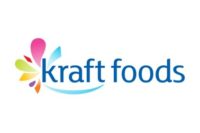
Commodity Cuts
President’s budget proposal ‘misses opportunity’ to improve dairy programs.
The Bush
administration’s proposed fiscal year 2008 budget released last month
failed to make wise investments in dairy programs, according to Washington,
D.C.-based International Dairy Foods Association (IDFA).
For nearly every commodity program except dairy, the
administration’s budget and recently released farm bill proposal
increased funding and took bold steps to modernize commodity programs to
make them more trade compliant and less market distorting. In contrast, the
proposed spending on dairy simply maintains funding for the Dairy Price
Support Program, the Milk Income Loss Contract (MILC) program and the Dairy
Export Incentive Program (DEIP) instead of including similar
forward-looking reforms.
“This budget does not move dairy policy forward
in any meaningful way,” says Connie Tipton, IDFA president and chief
executive officer. “The administration has missed two opportunities
to construct a better dairy safety net in its farm bill proposal and
budget. As a result, dairy producers and processors will continue to be
saddled with outdated and ineffective programs.”
The administration’s budget continues funding
for the Dairy Price Support Program and a reduced MILC program, even though
the U.S. Department of Agriculture (USDA) reported that these programs
conflict in the marketplace and have negligible impact on farm revenue. In
addition, the USDA’s inspector general recently reported mishandling
of government dairy products under the price support program, which
disrupted commercial markets. The International Trade Commission found that
the price support program stifles the development of innovative,
higher-valued products, even though they are in demand.
“Over five decades of new technologies,
transportation efficiencies and global trading prospects have greatly
improved opportunities for today’s dairy industry,” Tipton
says. “However, the government still thinks it needs to manage this
modern industry’s surplus inventory with the Dairy Price Support
Program.”
The budget and farm bill proposals would extend the
MILC program with changes that significantly reduce the cost of the
program. Under USDA’s proposal, payments would still be triggered by
an arbitrary fluid milk price in Boston, but the payment rate would be
phased down from 34 percent to 20 percent over five years. It would keep
the current payment limit on 2.4 million pounds of milk, but also limit
payments to 85 percent of the volume of milk sold on a dairy farm in the
previous three years. New income eligibility requirements would also apply
to MILC, and an overall payment limit that would restrict payments that
producers can receive from multiple farm operations.
These changes would reduce MILC payments from $672
million, the average annual cost under the 2002 Farm Bill, down to an
estimated $79 million annually. It remains to be seen whether Congress will
support an extension of MILC or even allow the program funding to be
continued.
IDFA says it’s committed to working with
congressional leaders to establish a stronger dairy farmer safety net. A
more effective program, IDFA proposes, would include direct payments to
farmers, be available year-round to fund sustainable production practices
and would not be tied to prices or production. IDFA also recommends better
risk-management tools for dairy farmers, including allowing all buyers and
sellers of milk to use forward contracting.
IDFA says it looks forward to working with Congress as
it begins writing the new farm bill, and soon will announce its recommended
“blueprint” for the 2007 Farm Bill.
$OMN_arttitle="Commodity Cuts";?>
$OMN_artauthor="";?>


